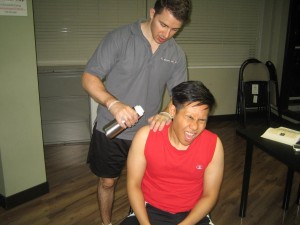CPR and first aid training is a program that is quite popular with a lot of training providers in the US. We have over 6 providers scattered throughout 5 states offering quality CPR and first aid certification courses at a fraction of the cost that our competitors offer them. You won’t find a provider that has better quality training or lower rates than our classes. All of our programs include a few lessons on basic first aid aside from the main CPR curriculum as well, so trainees become well-round rescuers. You can visit the location page for a quick rundown on our training locations and the programs we offer.

Becoming a certified CPR rescuer
Getting certified is easy! Students are just required to have complete attendance to all of the lessons and pass the post-tests given at the end of training. A post-test typically consists of a practical and written exam, but depending on the program, it either be just one of the two or both. Once all of these requirements are completed, the rescuers are awarded a training certificate for CPR and first aid.
These training credentials are valid for 24 months. Before they expire, they can be renewed through a re-certification program. However, not all programs have available re-certification. In that case, a rescuer will have to take the course again to get a new certificate.
CPR training programs
There are total of 3 basic CPR programs under Basic Life Support. The Basic Life Support was created by the American Heart Association to guide rescuers when managing a victim of cardiac arrest. Cardiac arrest happens when the heart fails to pump oxygenated blood adequately to the rest of the body. This is very dangerous and can cause multiple organ failure if left untreated.
- Basic cardiopulmonary resuscitation – This general public program is 4 hours long. It teaches trainees proper chest compression and rescue breathing skills for one-person rescue, as well as how to use an automated external defibrillator and give basic first aid. The post-test to become certified is optional; students are not required to take it.
- Basic cardiopulmonary resuscitation (C) – Although the curriculum is basically the same as the first program, this is for healthcare providers. It runs longer, for 4.5 hours. A skills test and written exam is given at the end to certify the trainee as a rescuer.
- Basic Life Support – This program is also for healthcare providers and runs for 4.5 hours as well. However, it teaches both one-person and two-person rescue aside from basic skill building. It also teaches students about the BLS guidelines from the AHA. A set of tests is given at the end of the program to certify a rescuer. If you plan on taking an Advanced Life Support program, you will need a BLS training certificate to qualify.
There are two Advanced Life Support programs available that teach students how to give CPR in a clinical set up with equipment, like a hospital or clinic. There are two ALS programs: ACLS (for adult victims) and PALS (for pediatric victims).
